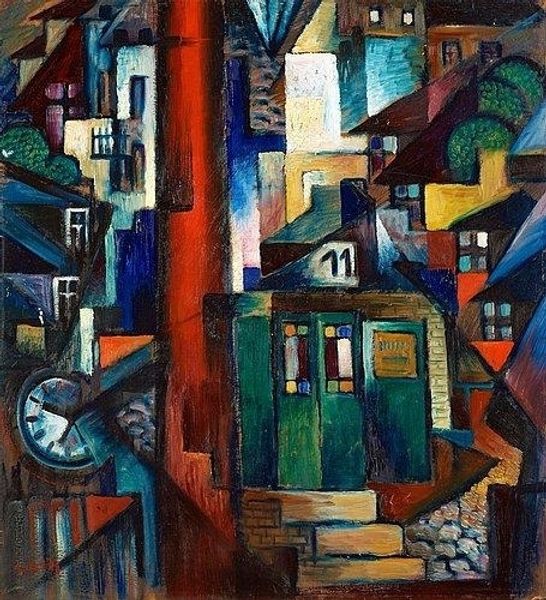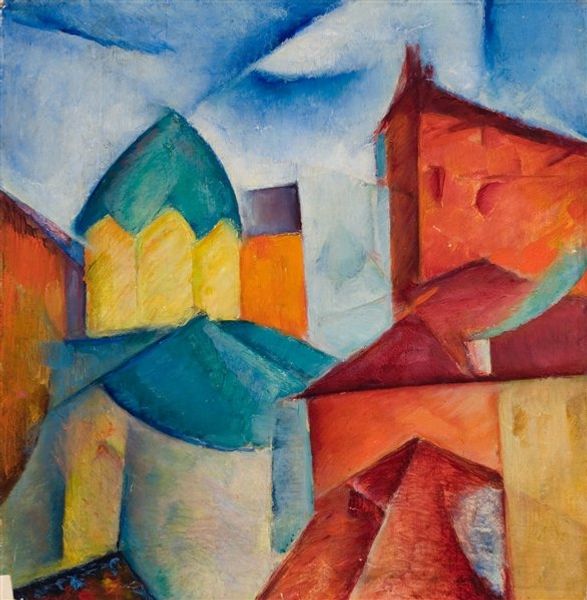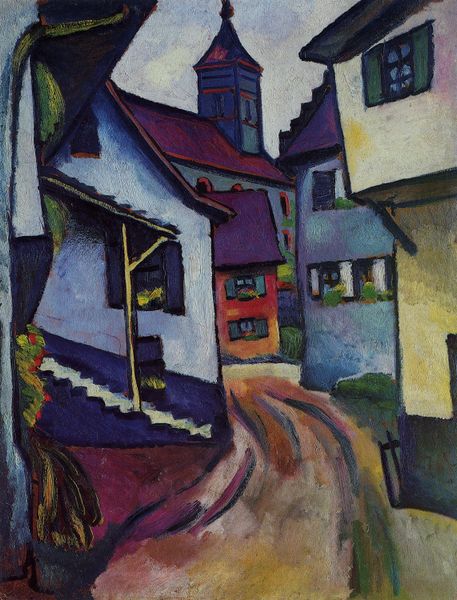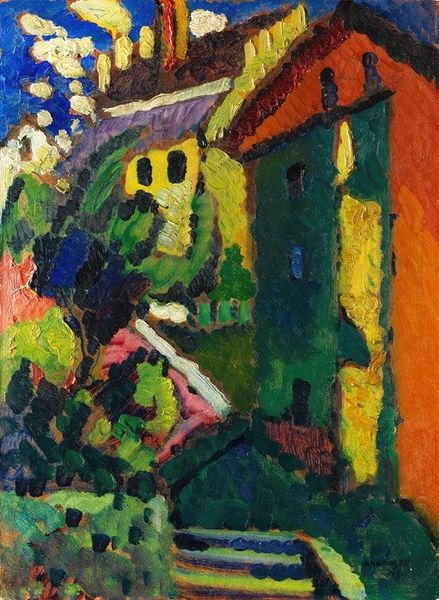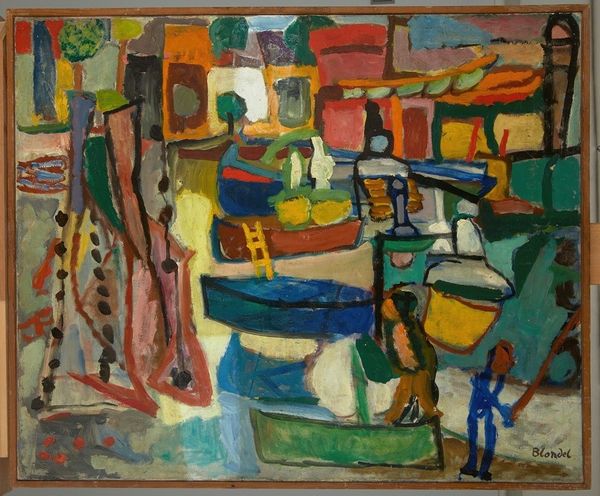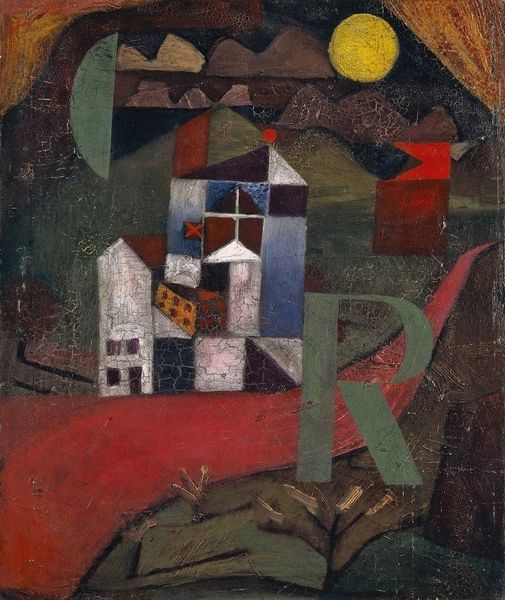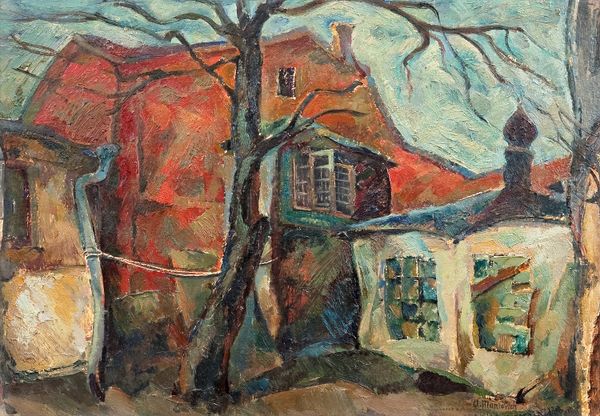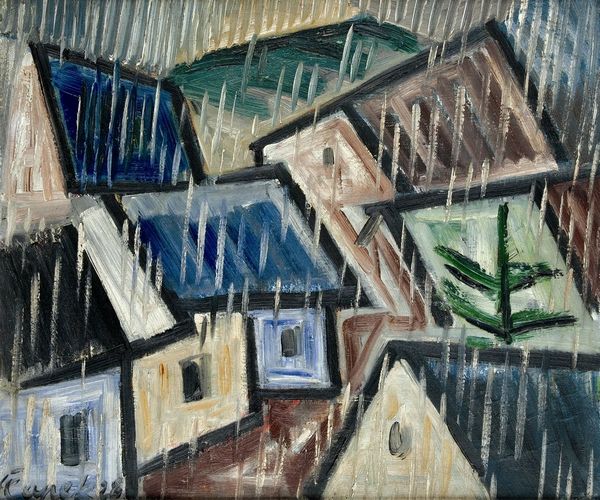
Copyright: Public Domain: Artvee
Editor: So, we’re looking at Amadeo de Souza-Cardoso's "Windmills and Telegraph Wire," painted in 1915. Oil on canvas. I’m immediately struck by how the colours vibrate. It feels like looking at a city through a heat haze. The composition is so fractured and angular. What do you see in this piece, that I might be missing? Curator: I feel like I'm tumbling into a dream. Cardoso throws convention to the wind, doesn't he? Cubism gets all the credit, sure, but there’s fauvism fighting for attention, that explosive, uninhibited use of colour. Do you notice how he breaks down the landscape into these almost geometric shapes, like he's rebuilding the world with a child's blocks, but in the intense, fevered heat of adult emotion? Editor: It's definitely not a literal depiction. The windmills aren’t really windmills! And telegraph wires as lines, barely there...it’s almost abstract. So, is it about capturing a feeling more than a place? Curator: Exactly! And what a feeling – a strange kind of exhilaration, tinged with… what? A sense of impending change, maybe? The wires, the windmills... They're symbols of a world hurtling forward. Think about the time—1915. Europe's on the brink. Cardoso is taking all that in, abstracting this historical, cultural shift to paint a vibrant emotional map of the moment. Can you sense that tension? Editor: I do now! It makes it so much more complex than just an interesting painting. It is almost prophetic when you put it that way. Curator: Perhaps all great art contains a bit of prophecy, wouldn't you say? Or maybe just the courage to look a bit deeper. Editor: This was insightful, thanks for sharing your expertise! I'll be spending much longer reflecting on Souza-Cardoso now.
Comments
No comments
Be the first to comment and join the conversation on the ultimate creative platform.
